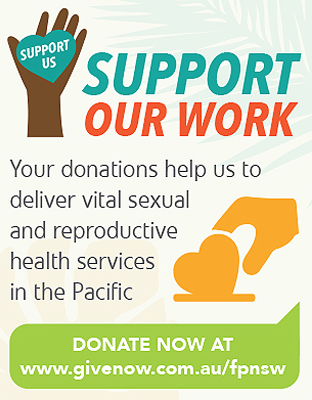Your take home guide to: The Cervical Screening Test
When life gets busy, it's not always easy to find time to take care of ourselves.
By getting regular Cervical Screening Tests, cervical cancer becomes one of Australia's most preventable cancers.
What is the Cervical Screening Test?
The Cervical Screening Test is a simple test that looks for human papillomavirus (HPV), a virus which can cause abnormal changes in the cells of the cervix. If left untreated, these cell changes can eventually cause cervical cancer.
Who should have a Cervical Screening Test?
Women and people with a cervix, aged between 25 and 74 who have ever been sexually active. This includes people who:
- are HPV vaccinated or unvaccinated
- haven't been sexually active for a long time
- have only had sex with one partner
- have only had sex with women
- feel healthy and have no symptoms
- have been through menopause
How often should you have a Cervical Screening Test?
Cervical Screening Tests are recommended every five years for women and people with cervixes who are between ages 25 and 74.
If HPV is detected, more testing may be recommended until your results are normal.
What is HPV?
HPV is a common virus spread through sexual activity and is the cause of almost all cervical cancers. Most people will have HPV at some point in their life and it often clears up on its own without causing any issues. Cervical cancer is a rare outcome of an HPV infection that doesn't clear up by itself.
Sexual activity includes:
- vaginal, oral or anal sex
- genital (penis or vaginal) skin-to-skin contact
- sharing of sex toys
What if I have been vaccinated for HPV?
The HPV vaccine (known as Gardasil) reduces your risk of developing cervical cancer. It protects you against the types of HPV that cause most cervical cancers, but it does not protect against all of them. Even if you are vaccinated, you still need to have regular Cervical Screening Tests.
Where can you get a Cervical Screening Test?
You can make an appointment at a:
- Family Planning NSW clinic
- local doctor or general practice (GP)
- local Aboriginal Medical Service
- women's health centre
You can bring a support person to your appointment to make you feel more comfortable. You can ask if a female doctor or nurse is available to do the test.
How is a Cervical Screening Test done?
The Cervical Screening Test is quick and simple and only takes a few minutes. The doctor or nurse will explain what will happen during the test. Knowing what to expect will allow you to relax and make the test more comfortable.
You can now choose from two ways to have your cervical screening test.
- Collecting your own vaginal sample (self-collection): You will be given a swab to gently insert inside the vagina in a private area. You can also ask your healthcare provider for help if needed.
- Having your healthcare provider collect your sample: This involves the healthcare provider gently inserting a speculum into your vagina and collecting a swab from the cervix (similar to having a pap test). The test should not hurt at all, but you might feel a bit of discomfort.
Both tests are safe and accurate for detecting HPV. If you choose to collect the swab yourself, there is a small chance that you may need to return to your doctor or nurse for a clinician-collected test if HPV is detected.
Talk to your healthcare provider about which choice may be right for you.
Results
The doctor or nurse will let you know when your results will be available. If your result shows that you have HPV, it means that you may be at risk of developing cervical cancer in the future. Your doctor will talk to you about what happens next. If your result does not find HPV, you will be due for another Cervical Screening Test in five years.
Worried you won't remember when to have your next test? The National Cervical Screening Register will send you a letter when your next Cervical Screening Test is due.


